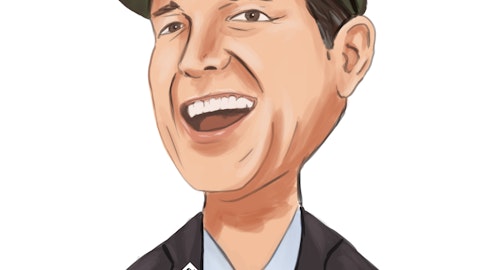Alex Nowak: Okay. All right. That makes sense. And then maybe a bit more on the delay with FACT-1 and 2. It looks like it’s a bigger push. I think it was metal of 2023 that pushed the second half. Just what you’re seeing there at the clinical trial sites? And then just an update on fact three, four and five time lines.
Brian Sullivan: Sure. I guess to get a patient enrolled in FACT-1 and 2 requires a fair amount of screening, 20% of patients who are — 20% of HER2-negative patients are eligible for our study based on the test results, the patients that are hyperactive HER2 signaling. And so it’s somewhat difficult to predict on a month-to-month basis, the proportion of patients that qualify for the study as well as just the screening activity. So we had a forecast, and it was a little optimistic relative to what we’re seeing currently.
Alex Nowak: And does that apply the FACT-3, 4 and 5 then as well?
Brian Sullivan: Yeah. And issue is not issues, but the challenges in — with getting patients enrolled in those studies is that we require a research biopsy. Unlike VICTORIA-1 study, where essentially we’re enrolling all comers, there’s no requirement for anything other than normal standard of care assessments. In the case of the FACT studies, we require a research biopsy which may not be standard of care typically isn’t in order to assess their tumor and determine whether their HER2 pathway status is hyperactive or not. And with COVID, that became very, very difficult because patients essentially were not coming in for non-essential or non-standard of care procedures. And so really, what we’ve been working with our sites to get them back into that essentially prescreening mode and scheduling these research biopsies for this patient group.
Alex Nowak: Okay. All right. Makes sense. And then you have cash through the readout of VIKTORIA-1. We also got data, which — it looks like from the — at least from a preclinical standpoint, that has applicability in breast cancer for prostate cancer and so on. So I guess how are you level setting it trying to manage these two. How do you want to put your head down, focus on VIKTORIA enrollment with the cash on hand versus maybe spending a little bit more that puts VIKTORIA enrollment readout what the cash you have on hand at risk, but you can go after these other cancers. How are you thinking about that?
Brian Sullivan: Sure. No, that’s a great question. When we raised the money last year, we took into account or assumed that we would do a single early phase, Phase 1/2 study in another tumor type. And so we factored that into our cash projections. And so our estimate of cash availability through ’25, it reflects the assumption that we do feel an early phase study in another tumor type. And relative — and with respect to obviously keeping our head down, our goal, we hope to report favorable data in the second half of ’24. We think if — in a similar time frame, I’m not projecting a time line, but I’m just simply saying if we could report in that ZIP code of time results in another tumor type, we think that would be very accretive to the value of the business because it would demonstrate — if the results were successful, favorable.
It would demonstrate that gedatolisib has the potential not only to be, we think, potentially a standard of care second-line drug data suggests we can move up line or certainly the potential for that in breast cancer as well as in other tumor types. And we think would just highlight the significant value that this drug provides to cancer patients and the resulting value to shareholders. So we think those fairly long lead time to get that type of data going. And we think it’s to everybody’s advantage if we can, in effect, plant the flag in another tumor type and get a perspective on — get activity, which we think if favorable, would be very, very valuable to everybody.
